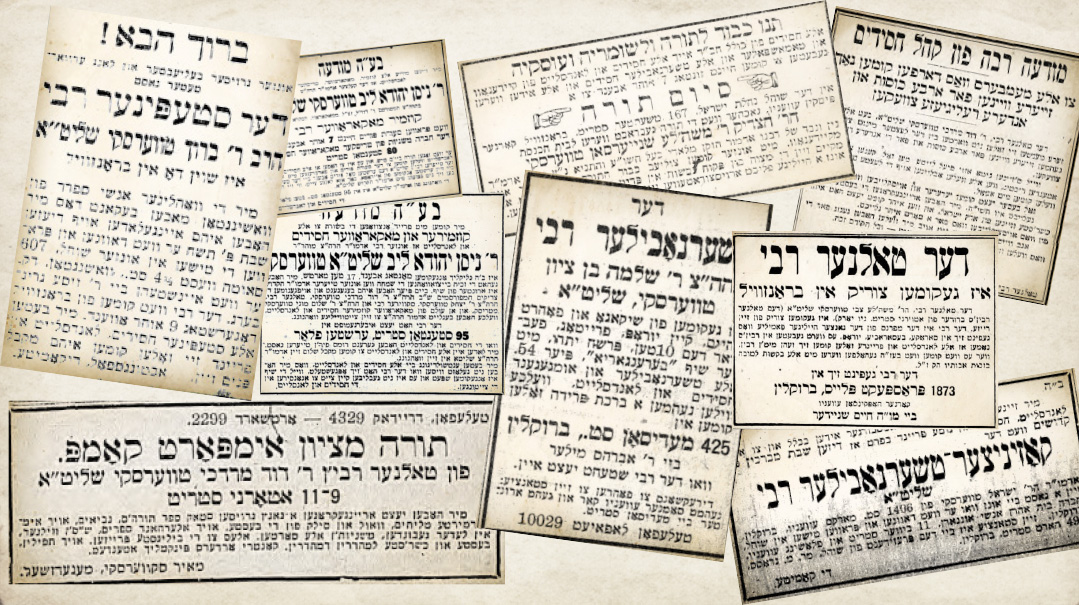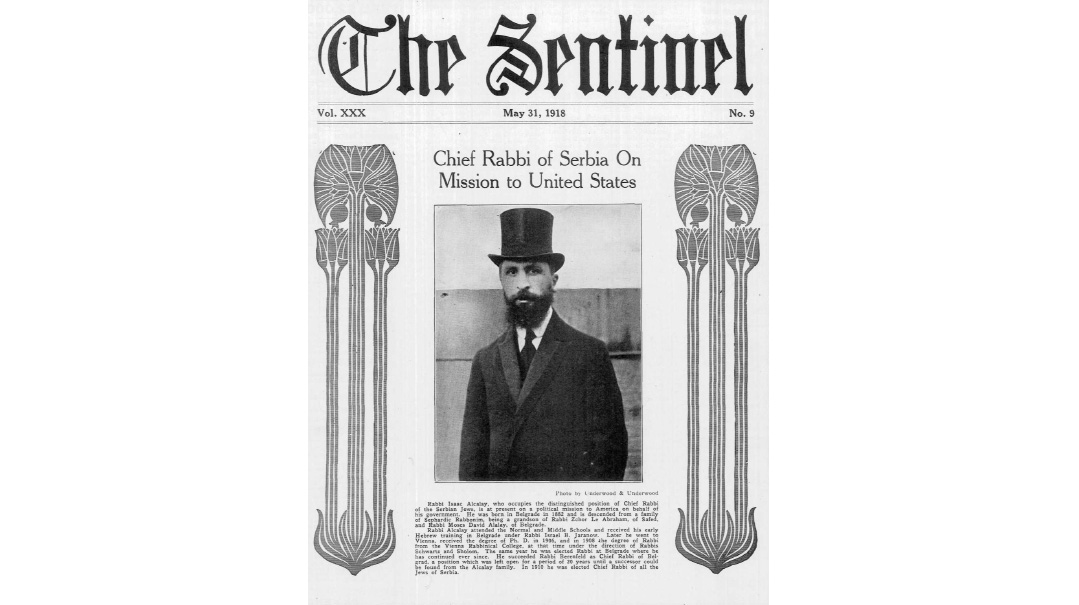The Spread of Chernobyl
| February 21, 2023The House of Chernobyl was founded by Rav Menachem Nochum Twersky, a talmid of the Baal Shem Tov

Title: The Spread of Chernobyl
Location: New York
Document: Various Newspaper Ads
Time: 1920s
AS the chassidic movement’s center of gravity shifted west to Galicia and Poland over the 19th century, the dominant dynasty remaining in Ukraine was the House of Chernobyl, founded by Rav Menachem Nochum Twersky, a talmid of the Baal Shem Tov and author of Meor Einayim. His son and successor, Rav Mordechai Twersky, known as the Chernobyler Maggid, had eight sons who would establish courts across central Ukraine, among them Tolna, Rachmistrivka, Skver, Cherkassy, Hornosteipel, Trisk, Makarov, and Korostyshev.
With the Bolshevik Revolution in 1917 and the subsequent establishment of the Soviet Union, religious leaders were persecuted and often had to flee or go into hiding. Some leaders of Chernobyl hunkered down and stayed, their small communities operating underground in the ensuing decades. Most were ultimately exiled to Siberia or killed by the Nazis during the Holocaust. Some escaped to Poland, while the Rachmistrivka branch made it to Eretz Yisrael.
Others were able to escape the Soviet Union, ultimately reaching the United States and becoming some of the earliest chassidic leaders to establish themselves there.
Tolna was the first branch of Chernobyl to arrive in the New World. Rav Dovid Mordechai Twersky immigrated to New York in 1913, where he established a Tolna shtibel on the Lower East Side. An ad in a Jewish newspaper stated that he had “hundreds of members who were Sabbath-observant and proper Jews at his synagogue at 9 Attorney Street.” His brothers fled the Soviet Union during the 1920s, with Rav Moshe Tzvi arriving in Philadelphia in 1924, and Rav Meshulam Zusya immigrating to Massachusetts in 1927. Eventually settling in Boston, he was succeeded by his son Rav Yitzchak Asher (Professor Isadore) Twersky, who served as Tolna Rebbe while also a professor at Harvard.
In the upheaval of the Bolshevik Revolution, Rav Shlomo Shmuel Twersky left for Kiev, terminating the family connection to Chernobyl for the first time since the Meor Einayim settled there in the late 18th century. The Chernobyler Rebbe struggled to maintain the flame of Yiddishkeit under the Soviets until the early 1930s, when he finally left for Riga, then for the United States, where he was one of the earliest rebbes to reside in Brooklyn. He passed away shortly after his arrival in 1935 and was succeeded by his son Rav Yaakov Yisrael.
When Rav Mordechai Dov Twerski of Hornosteipel passed away in 1903, he was succeeded by his son Rav Bentzion Yehuda Leib, who, in 1921, escaped Kiev into Poland, settling in Krakow. After short stints in Eretz Yisrael and Antwerp, he managed to leave Belgium shortly prior to the Nazi invasion and settled in Chicago. Following his passing in 1951, he was succeeded by his son Rav Yaakov Yisrael Twerski as the Hornosteipler Rebbe in Milwaukee. His children went on to dominate the American Torah scene as rebbes, rabbis, and chassidic academics. Perhaps the most famous scion of Hornosteipel was the pioneering psychiatrist Rabbi Dr. Abraham J. Twerski.
Back in the USSR
The Chernobyler Rebbe Rav Shlomo Bentzion Twersky might have had the briefest stay on American shores during those early years. Having fled to Kiev with the outbreak of the Revolution, he soon arrived in New York in the early 1920s. He soon got quite disillusioned with American Jewish life, likening it to bondage in Egypt. Corresponding with his followers in the Soviet Union, he seriously considered returning there. They discouraged him from taking such a drastic step, and depicted the utter collapse of Jewish life under Communism in a letter dated November 20, 1927:
We are now like abandoned objects with no owners! There is no mercy for us. Most Jews of this class are dying from hunger. You wrote in your letter that we should pray that you are liberated from Egypt, but we cry for ourselves night and day… Who is worse off? We suffer at the hand of Eisav for our lives… Thousands of us are arrested for no reason.
Despite the dire reports, Rav Shlomo Bentzion did the unthinkable and left the United States and returned to the Soviet Union. Struggling to maintain a small clandestine court in the Kiev region, he remained there until his passing in September 1939.
A Twersky in Crown Heights
Rav Mordechai Dov Schneerson adopted the surname of his maternal grandfather, Rav Yaakov Yisrael Twersky of Cherkassy. His son Rav Chaim Moshe Yehoshua in turn took on both names, combining them as Schneerson-Twersky. After escaping the Soviet Union in 1924, he settled in Crown Heights, where he was a leading builder of mikvaos in the United States. Calling himself the Tomashpol-Koidenov Rebbe, Rav Schneerson-Twersky maintained a close affiliation with Chernobyl and Chabad; his shtibel was down the block from 770 Eastern Parkway.
(Originally featured in Mishpacha, Issue 950)
Oops! We could not locate your form.







